How I Stopped My Cat From Being Sick
From toxifillers.com with love
But write about his non-puking I shall, because this could be a handy old bit of information for some. It’s the sort of helpful info that should be freely passed around, perhaps from generation to generation, even, daubed onto a cave wall or scratched onto a scroll of parchment. Ye ancient words of Ruthe Crillye, in service to cat-owners everywhere. Saving carpets and rugs, one house at a time.
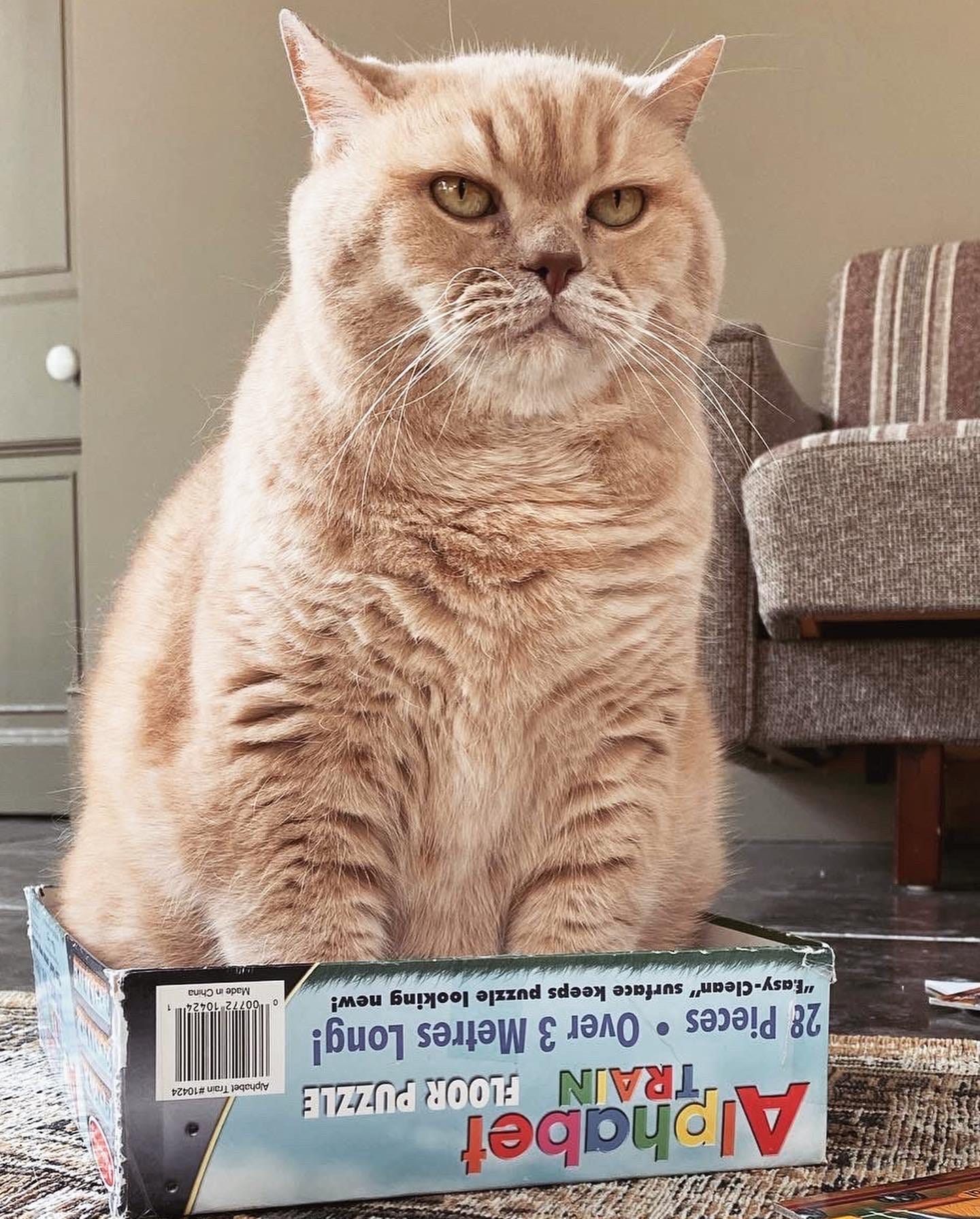
In case you’re new to me (hello!) then let me introduce you to my cat, Mr Bear. He’s a British Shorthair, will be thirteen this month and is a bit of a unit, size-wise. (As male British Shorthairs tend to be.) At his majestic pinnacle of weightiness he was an ungainly eight and a half kilos: I feel he is rather lighter now, but he would still do well in a cat wrestling heavyweight championships.
If such a thing existed.
God, please let that exist.
For much of Mr Bear’s life, he has been a puker. Now before we go deep into this unsavoury topic, can I please stress that the following does not constitute veterinary advice, nor does it replace it. If your cat is vomming, please do seek professional help, etc.
I had to take my cat to the vets two or three times before I worked out for myself that my cat wasn’t dying of some hideous disease, but simply greedy. I am not an advocate of the Dr Google approach to healthcare (internet searching your symptoms to diagnose your own ailments) and I’m not keen on Google Vet (same thing but for your animals) for the same reasons. Reasons I need not go into because they should be obvious.
Even though – in the end – Google Vet was actually more useful than the actual, really expensive Real Life Vet, I still must be responsible and highly recommend that you see the real person if your cat is projectiling bile around as though its an extra in Poltergeist.
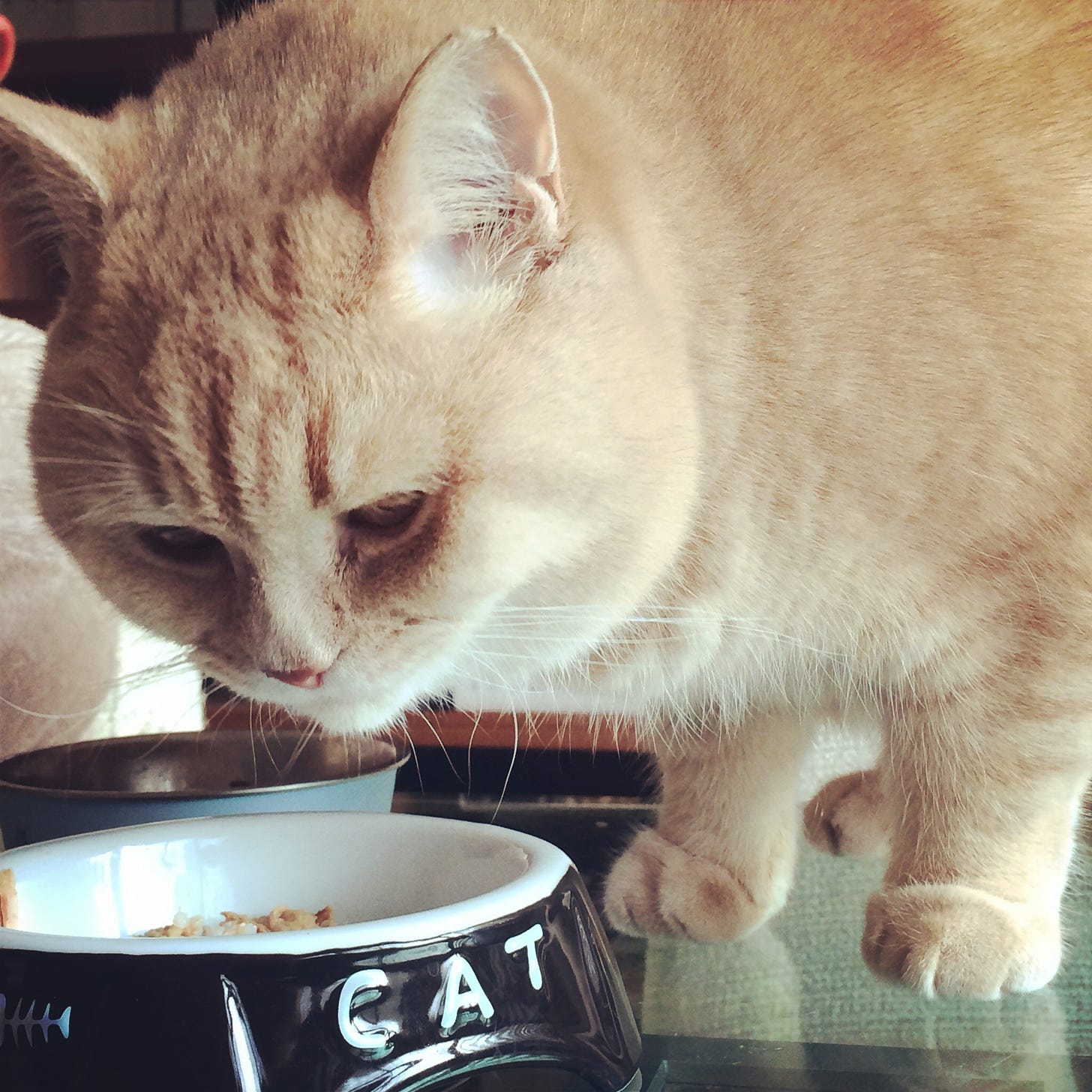
Anyway, to get back on track: for much of his life Mr Bear has been a puker. Big, fishy piles of mush, thrown up noisily and with what looked like a hell of a full-body musculature workout, all over the carpets. Never on the tiles, even if tiles were close by, and never on the easily-wipeable wooden floors. Just on the carpet.
I swear that my cat would find an area of expensive, stainable, highly-absorbent fabric even if he was placed in an expansive room made entirely of, I don’t know, granite. Or marble. Had he been a cat in the Palace of Versailles, in the times of – say – Louis XV, un chat royale, then he would have stalked the miles and miles of marble-floored corridors holding in his vom until he happened to chance upon a section of priceless, ancient, golden-thread-woven rug and then he would have held his curly wig to the side and chucked up on it.
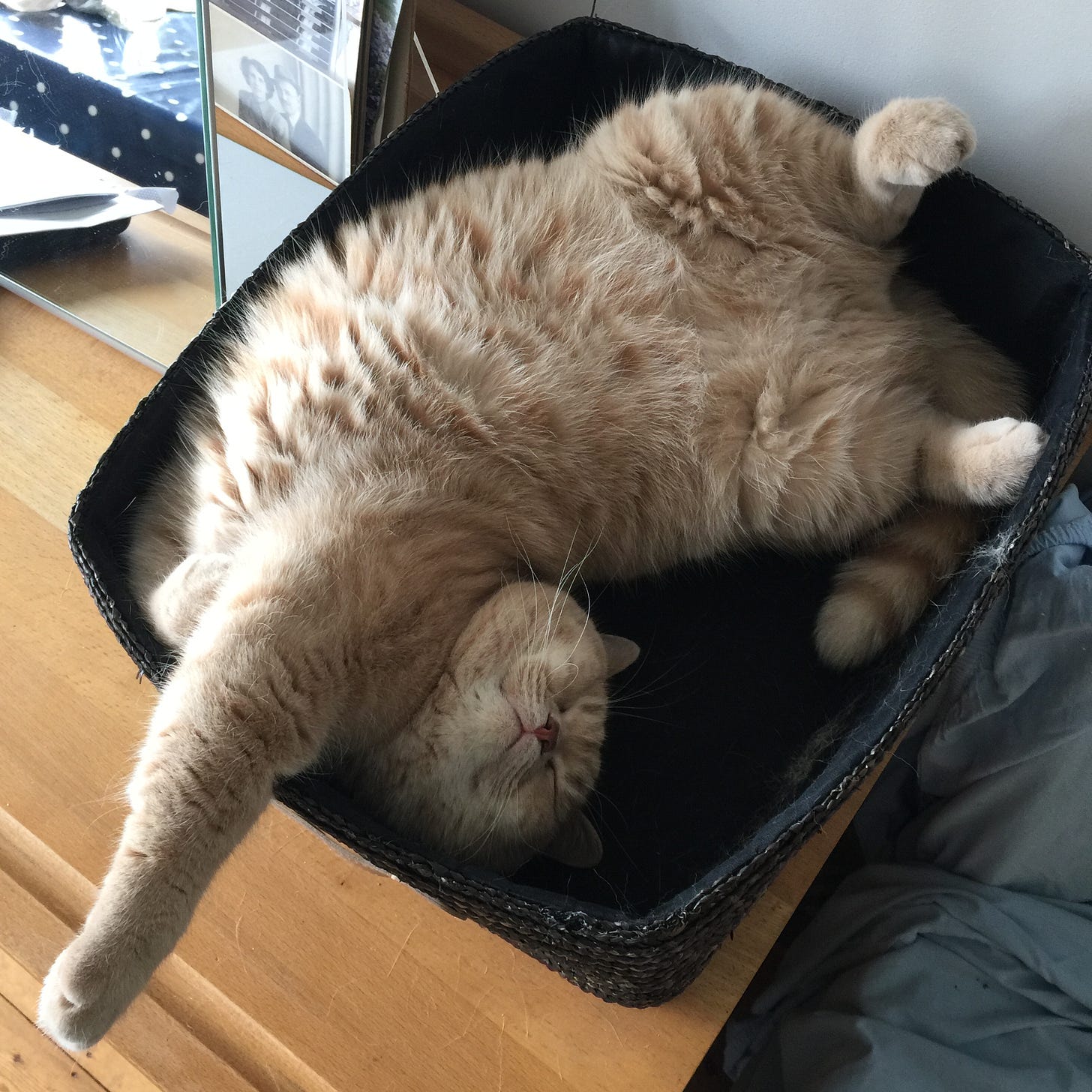
This puking was alright for years – manageable, not too much of an annoyance, cat seemed “fine in himself” – but for the past year or two the throwing up had become more worrisome. Daily, sometimes. In we went to the Real Life Vet, so that the vet could feel his stomach (the cat’s, not his own) and look in his ears (ditto) and then send us home with a bill for eight thousand pounds with the verdict that there was nothing physically wrong with him. (The cat.)
Which is where Google Vet came into its own. Because there’s nothing the internet does better than feed you with unverified anecdotal material and potential misinformation that has been entered into the system by billions of people who may or may not be sound of mind: and from within this quagmire of brain effluence came something so revelatory, so utterly accurate, that I actually cheered.
Mr Bear wasn’t vomming at all: he was regurgitating his food! This should have been obvious because the piles of sick actually looked and smelled exactly like his food, down to the precise shape of the kibble and the fact that some of it still had the dusty dry surface, but I hadn’t really put two and two together.
God bless Google Vet.
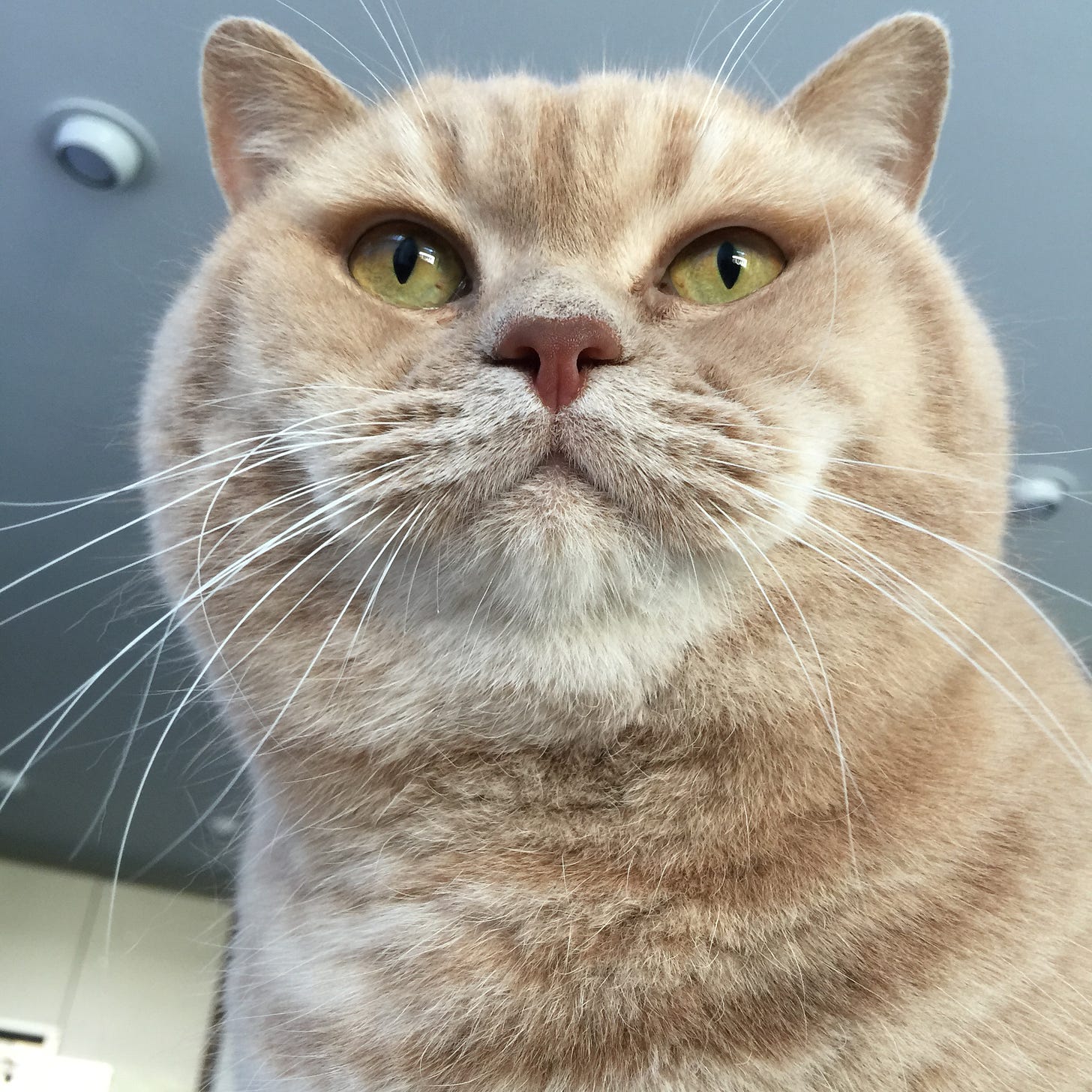
Once I knew this, that Mr Bear was regurgitating his food soon after eating (gorging) on it, rather than slowly dying of something the vets weren’t picking up in their tests, I set about fixing the problem. And here, finally, almost a thousand words into the post, is the helpful bit: how I stopped my cat from being sick.
I raised the cat bowl upwards from the floor.
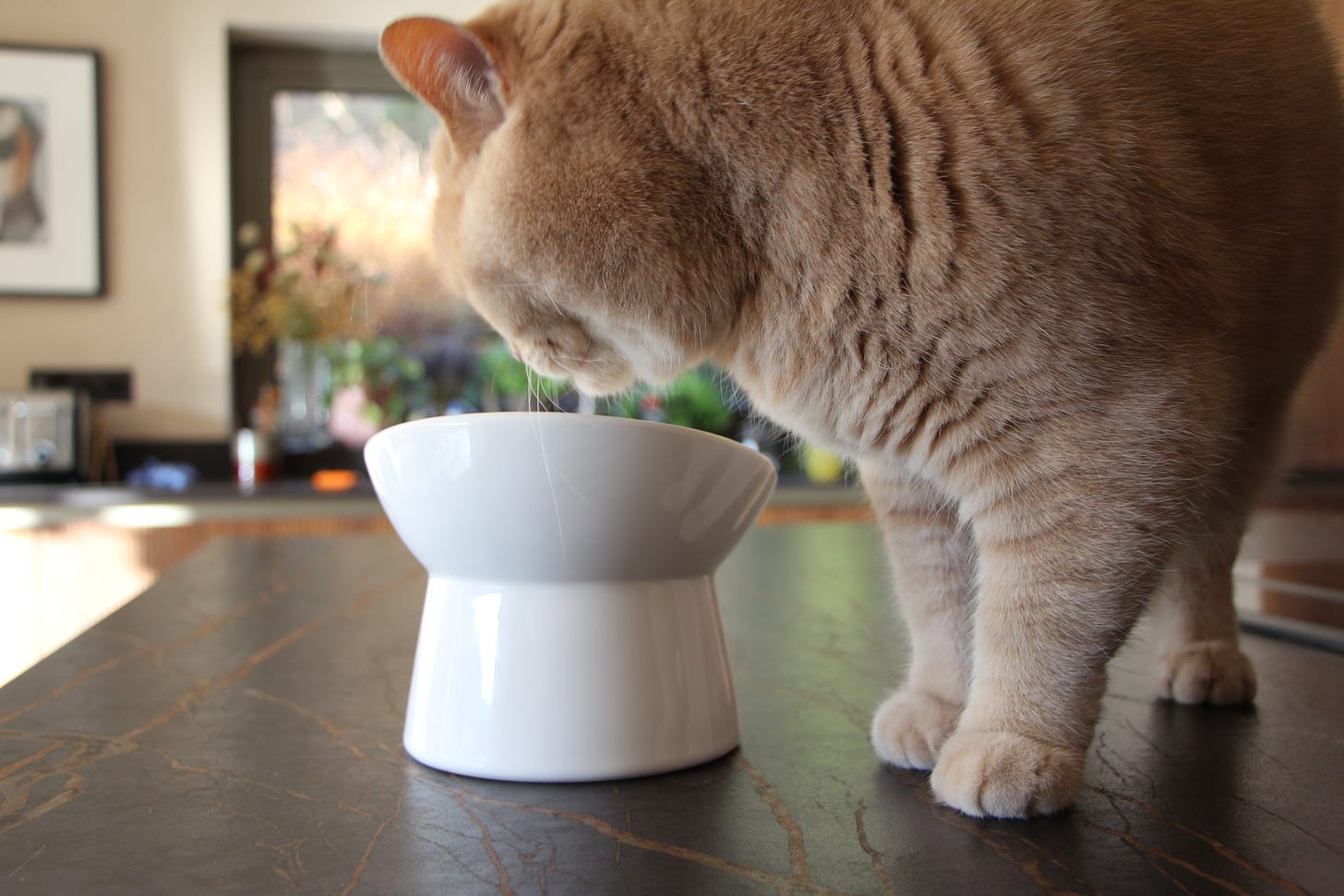
I know! Bloody hell. Could a fix be any more simple? I thought, at first, that the cat was eating too fast – greedy gobbling – and I put out one of those puzzle bowls to see if slowing him down would stop the vom. You know the pet bowls with the nobbly bits inside?
It didn’t work. Puke volume reduced, frequency reduced, but problem not eradicated. I have to say that I was quite disheartened by this: “slowing down the feeding” seemed to be the most-touted fix on Google Vet, and I had been sure that Mr Bear’s enthusiastic speed-feeding had been the culprit. My mind darkly turned itself back to incurable cat diseases.
But then I read something else, something about certain cats – especially larger ones – regurgitating food because of the angle that they have to eat at when a bowl is placed on the floor. There was a diagram – sadly now I cannot find it – showing the cross-section of a cat’s head and neck and demonstrating the fact that the food was having to be pulled up the throat almost vertically to get around the bend and into the digestive system.
I’m sure the accompanying piece even said something along the lines of, “imagine if YOU had to eat upside down! That’s what it’s like for a cat when you place the bowl on the floor!” Which seemed slightly dramatic and far-fetched, really, but stuck in my mind. A bit in the same way the food was getting stuck in the cat’s neck!
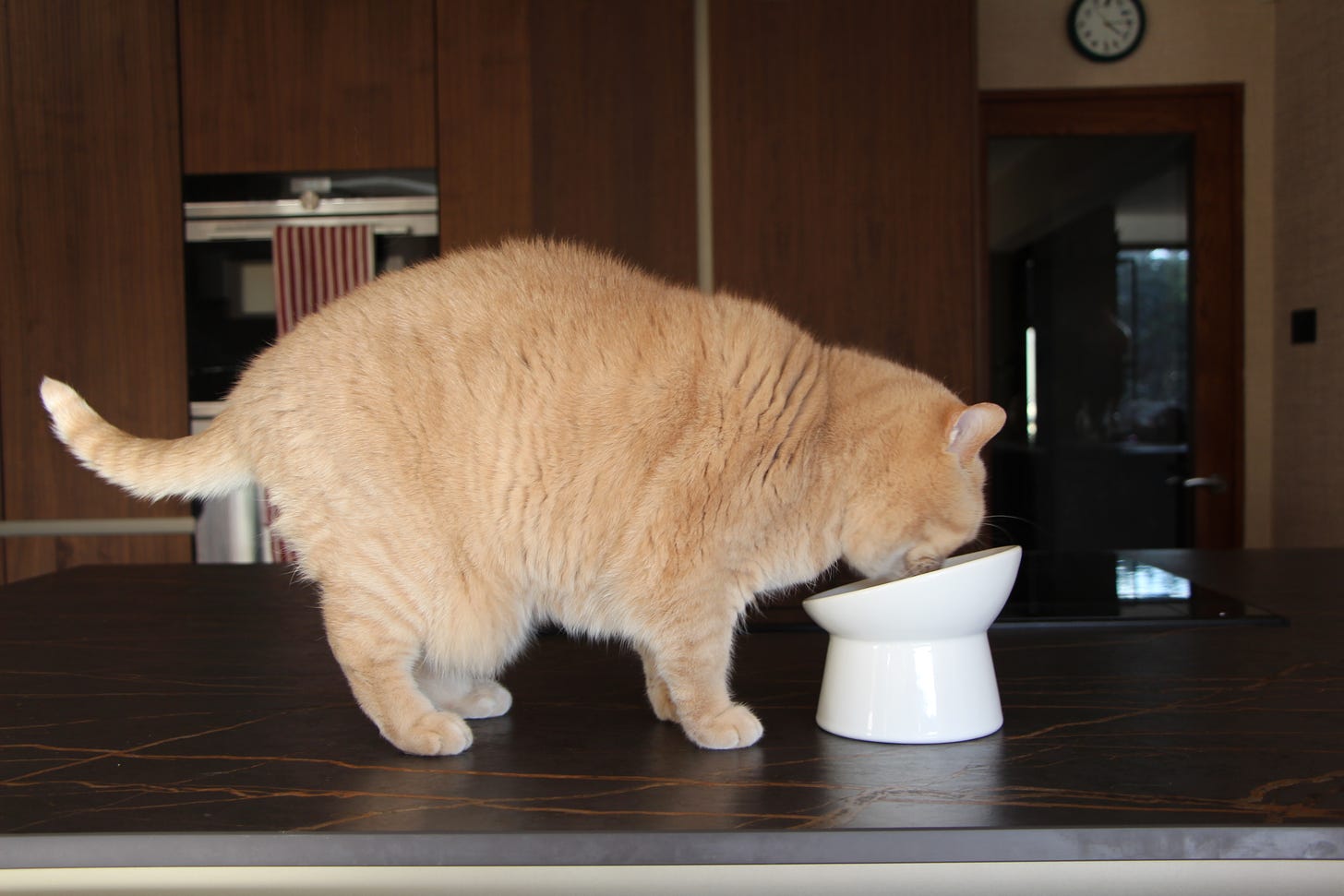
It was worth a try, at any rate, and I placed five paperback books beneath the cat bowl that very morning, raising it up so that he could leisurely chomp away without having to contort himself. Has he thrown up since? Almost never. I don’t even think it has been a handful of times. Probably just the three times I’ve gone to write about it, which is definitely a jinxing situation rather than a relapse one.
Cat vom is simply not part of our lives anymore – we’ve gone from virtually every day to it being a surprising occurrence. (It usually happens if we’ve been away, actually – it’s as though he goes on hunger strike and then gorges once we return.)
Eventually we bought a proper raised bowl and took the paperback books away – I bought this one here from Amazon (affiliate link) – and the only regret I have is that I didn’t do more extensive Googling before.
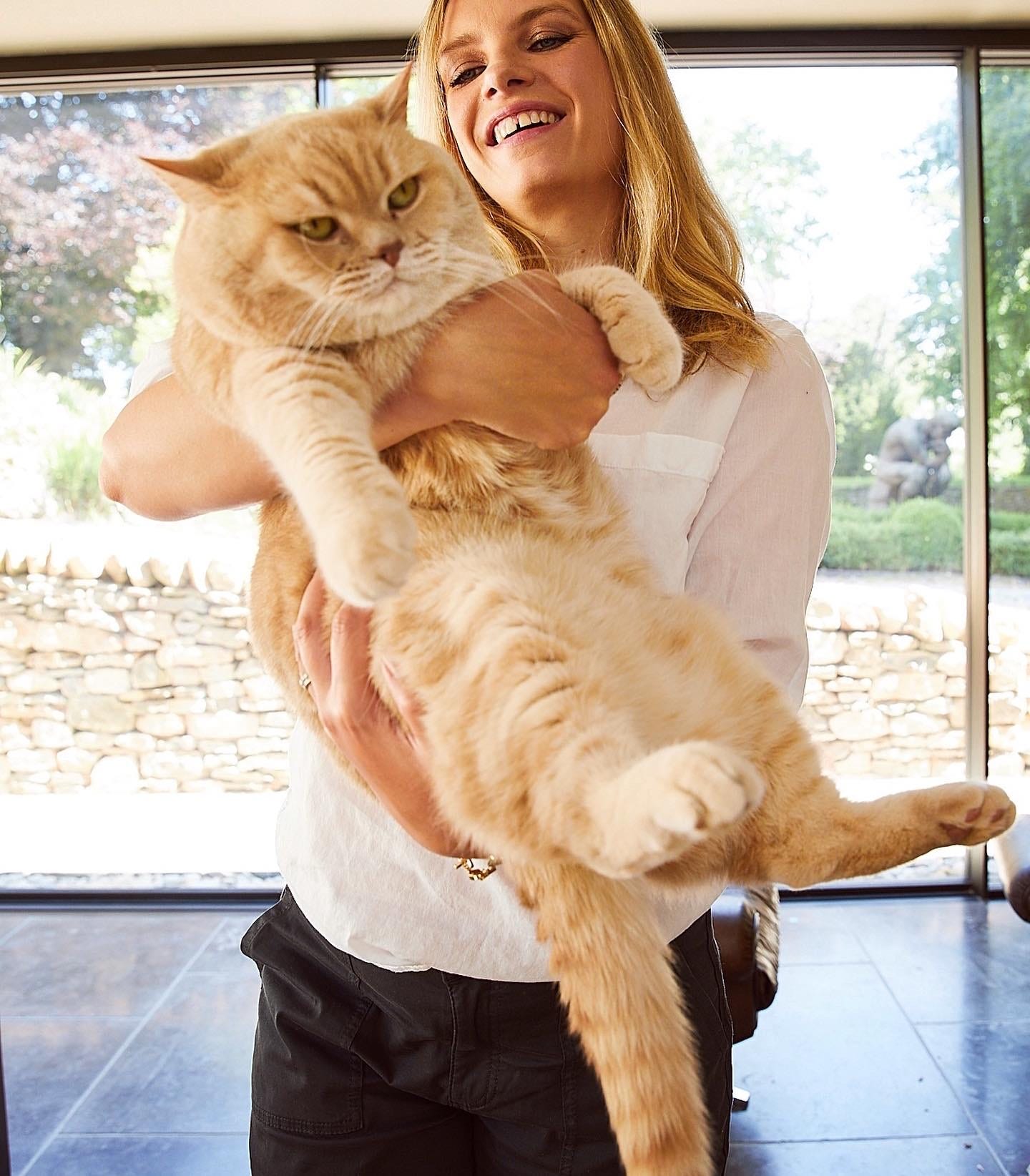
I’m going to tell you something else, too: whilst I was at it, I changed his food over. After twelve whole years of feeding him the one that the breeder had given him (Royal Canin British Shorthair) I decided to do a bit of research and see if that was the best one or whether I had just blindly followed the advice of someone who may have not done their own research in the first place.
Sidestory: when my dog was tiny, he had terrible stomach problems. Fancy dog foods like the ones you get now (hand-delivered to the door, no less! Using expensive cuts of fresh meat!) barely existed when we first got him and the idea of “grain free” pet foods, ones that weren’t just filled with all sorts of shite and sawdust and whatever else they probably put in some of them, were pretty niche.
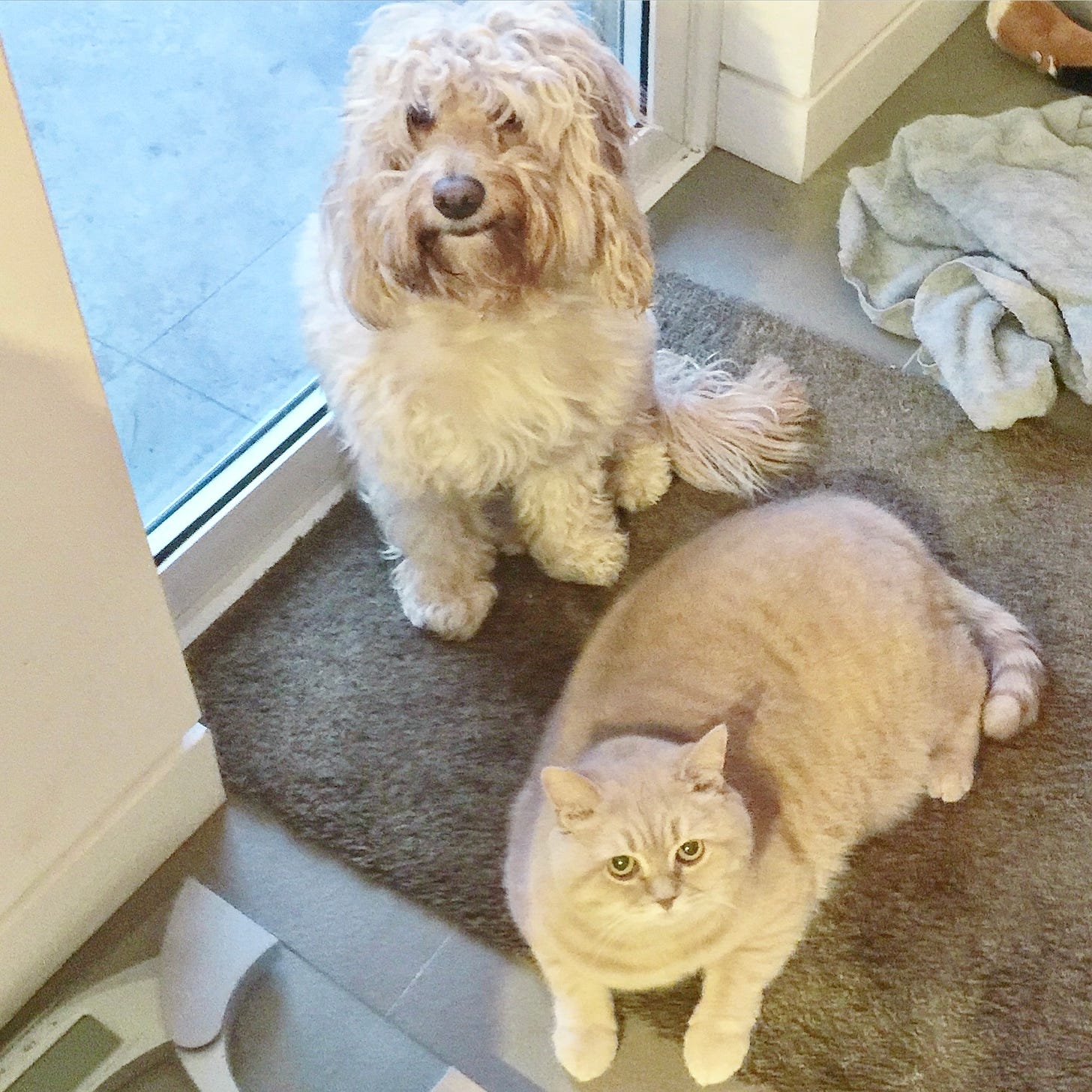
But he was really poorly with the dried dog foods that were widely available and so I spent quite a while trying to find him something he could tolerate. And I came across this brilliant website that rated different dog foods according to the ingredients and percentage of useful nutrients and so on – All About Dog Foods. I highly recommend it – you can even add your dog’s details in now to try and find a suitable food. When I first used it, it was a very basic site.
All About Dog Foods
Anyway, this website gives you a percentage rating for each dog food and tells you what’s good about it and what’s not – for example, some Pedigree food rates at 19% (which is not great, obviously) other brands, such as Aatu, rate at 80%. Others rate even more highly. It’s well worth a look if you’re looking to switch up your dog’s food, or you’re just curious about what’s in the one you’re using. It ended up being a really helpful way for us to find a dog food that Dexter (the cockapoo) could tolerate and it also gives the approximate price of the food per day so that you can easily weigh things up.
I remembered this site when I was doing all the bowl-faffing with the cat and wondered whether there was a cat food equivalent and behold:
petfoodexpert.com
Hurrah! Not exactly the same site, but similar enough and also unbiased and with the helpful percentage scoring. Using their info, I narrowed down my food options for Mr Bear to around five choices and then worked out the cost per kilo for each. I ended up going for Orijen Original, which had the highest ingredients score for the most palatable price. In actual fact the cost per kilo for the Orijen (84% scoring for ingredients) was only marginally higher than for the Royal Canin (36% ingredients score).
I tell you all of this not to put you off the brand of food that you use, or suggest that you change, I just found it all very interesting and it seemed like a no-brainer to move the cat onto something that was more nutrient-rich and had less bulky filler, especially as he’s getting into his Silver Fox years.
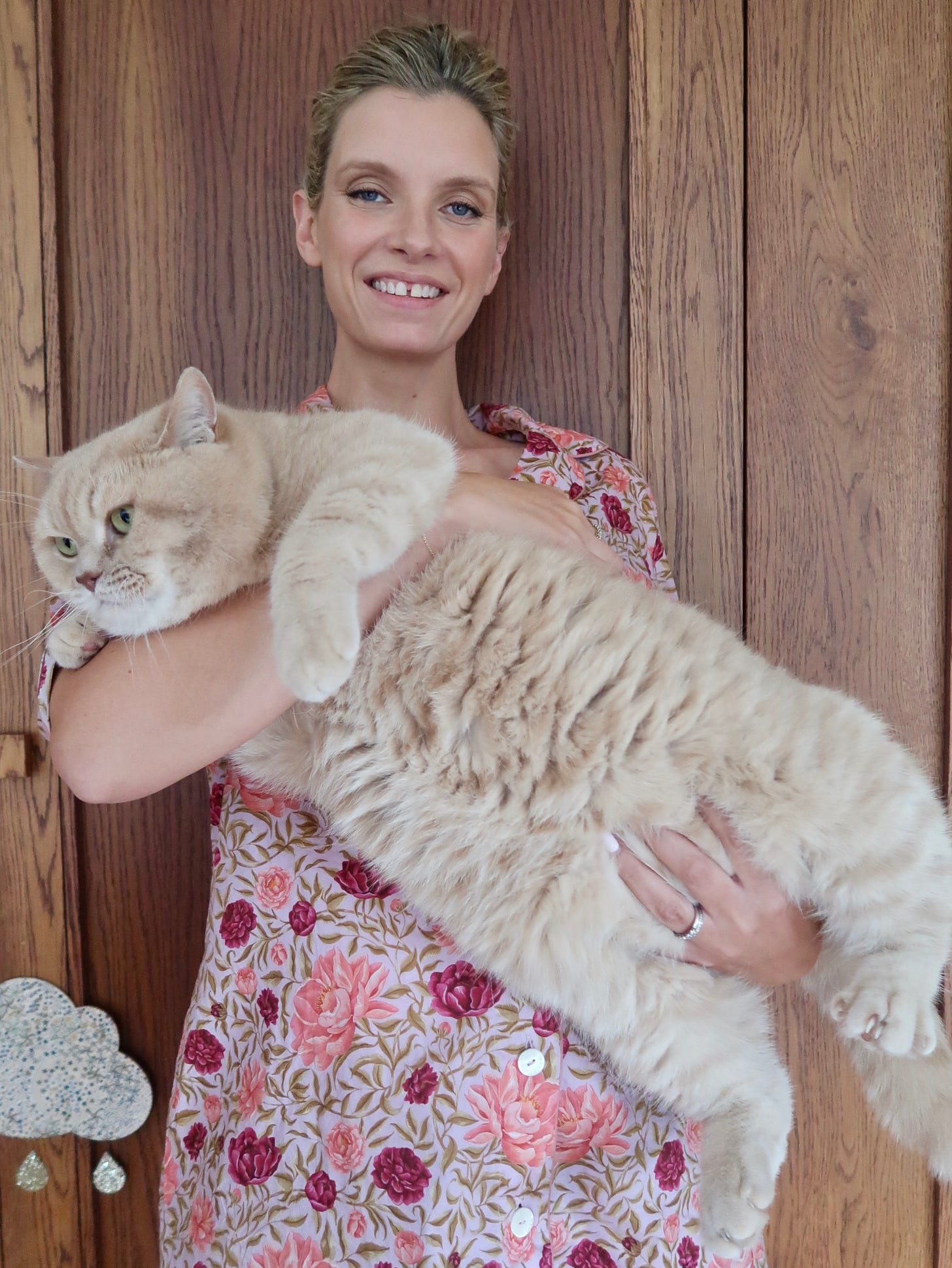
If you’ve stuck around to the end then congratulations – especially if you don’t have a cat, or don’t even like them, but just carried on to see how it all ended. Please do share this post with cat-owners, if they too have to endure the regurgitation rituals I described earlier. Again, I’d stress that this is all just personal experience and doesn’t replace actual expert advice.
Comments section is open for all joyful cat and dog discussion – see you there!

